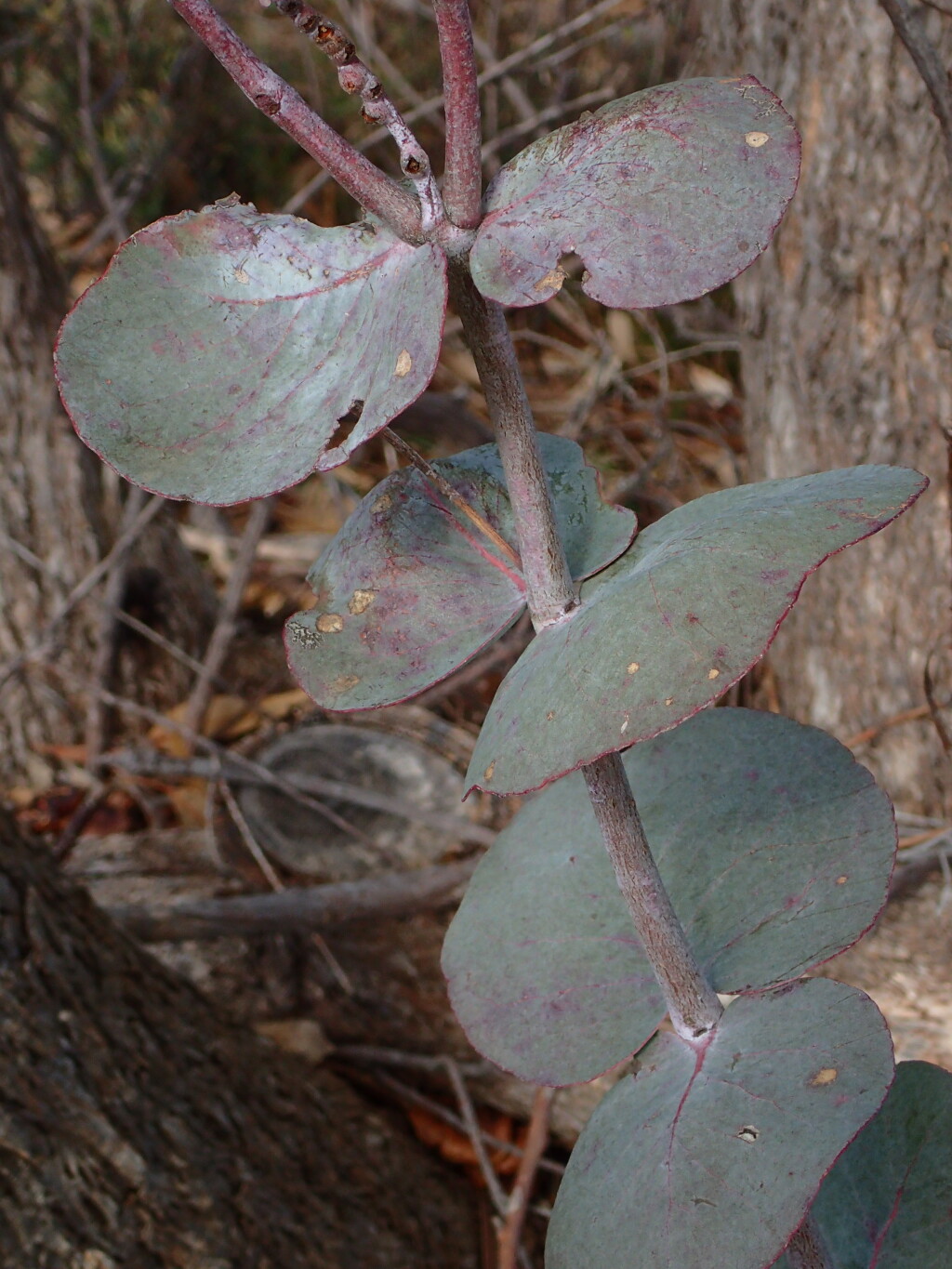Eucalyptus goniocalyx
F.Muell BundyTree to 15 m tall; bark usually rough over whole trunk, fibrous, becoming coarse and thick. Juvenile leaves sessile, opposite for many nodes, orbicular, to 11 cm long, 10 cm wide, glaucous, or rarely glossy, green; adult leaves petiolate, alternate, lanceolate, 10–20 cm long, 1.5–3 cm wide, concolorous, glossy, green; reticulation dense, with numerous island and intersectional oil glands. Inflorescences axillary, unbranched; peduncles flattened, to 1.5 cm long, 7-flowered; buds sessile, ovoid, to 1.3 cm long, 0.6 cm diam., scar present; operculum conical or rounded-conical; stamens irregularly flexed; anthers dorsifixed, cuneate; ovules in 4 vertical rows; flowers white. Fruit sessile, cupular, to 1 cm long, 1 cm diam.; disc descending; valves 3(4), rim level or below; seed grey-brown to blackish, flattened-ellipsoid, reticulate, hilum ventral. Flowers Mar.–Aug.
LoM, Wim, VVP, VRiv, GipP, OtP, Gold, CVU, GGr, DunT, NIS, EGL, EGU, HSF, HNF, OtR, MonT, VAlp.
Eucalyptus alaticaulis, E. litoralis, E. pyrenea and E. carolaniae are closely allied to E. goniocalyx. These species have well-developed rough bark on the whole trunk that does not extend onto branches, large ovate to suborbicular juvenile leaves that are quite amplexicaul, glossy, green or pale green, slightly discolorous, and cylindric buds.
There are 5 subspecies, 4 in Victoria.
Brooker, M.I.H.; Slee, A.V. (1996). Eucalyptus. In: Walsh, N.G.; Entwisle, T.J., Flora of Victoria Vol. 3, Dicotyledons Winteraceae to Myrtaceae, pp. 946–1009. Inkata Press, Melbourne.
 Spinning
Spinning


